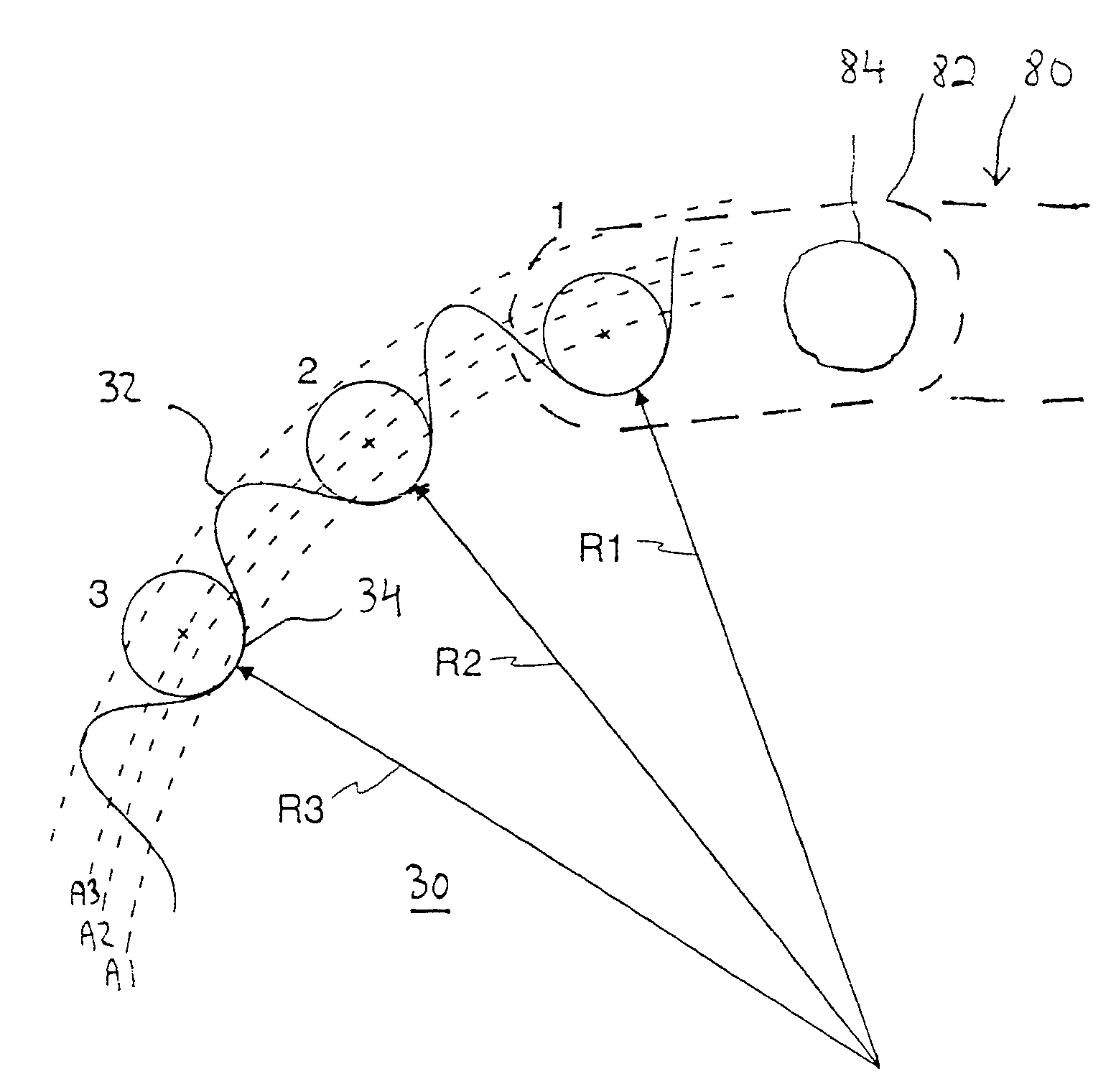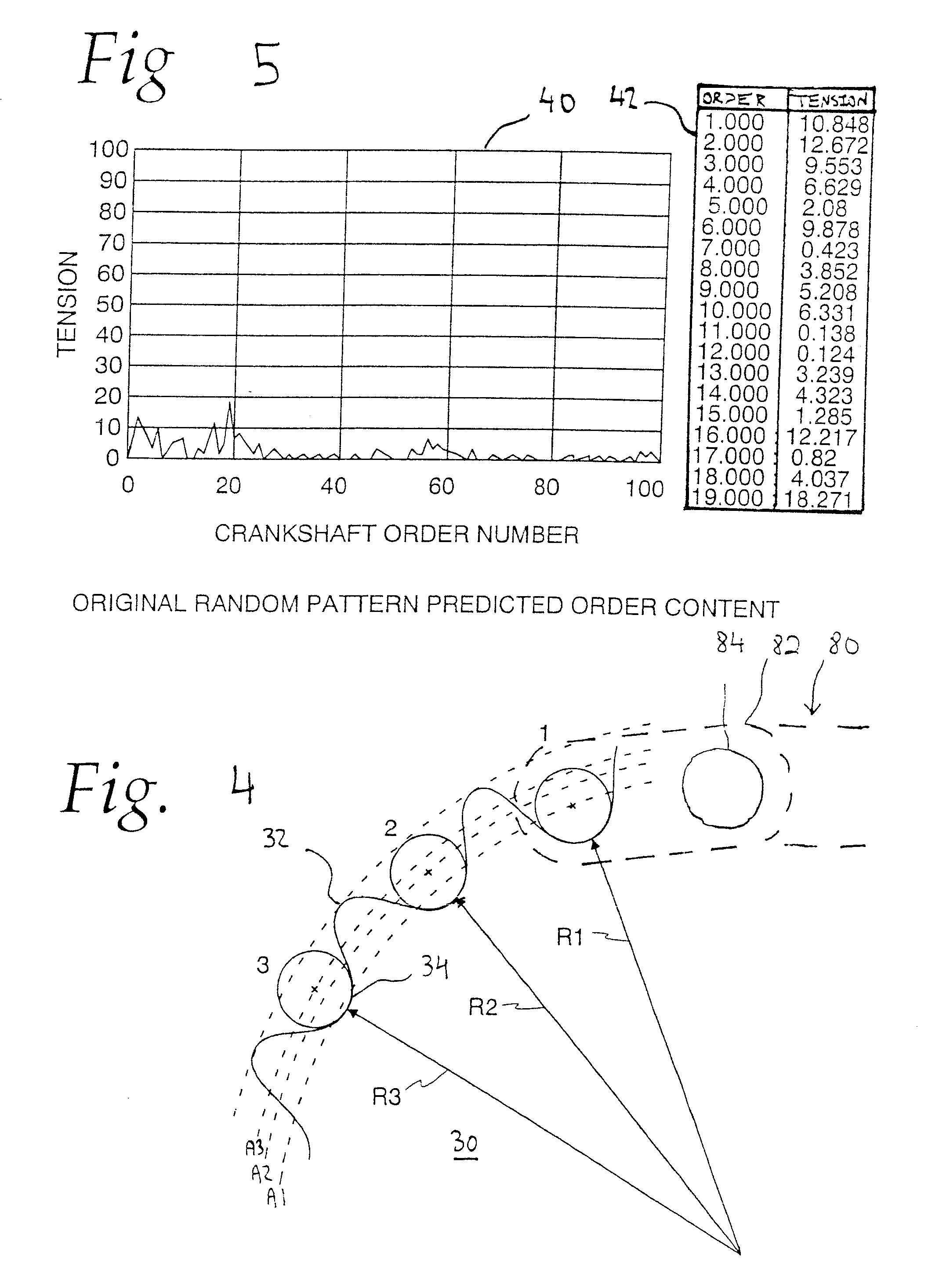Tension-Reducing Random Sprocket
a random sprocket and chain tension technology, applied in the direction of gearing, gearing elements, hoisting equipment, etc., can solve the problems of repeated tension changes, increased chain tension and tension changes, and often generated audible sound frequencies creating undesirable noise, etc., to promote reduced or controlled chain tension and reduce chain noise.
- Summary
- Abstract
- Description
- Claims
- Application Information
AI Technical Summary
Benefits of technology
Problems solved by technology
Method used
Image
Examples
example 1
[0040] The random sprocket 20 illustrated in FIG. 2 is designed to reduce noise generated by engagement of the chain 80 with the sprocket 20. The random sprocket 20 is similar to the straight sprocket 10 of FIG. 1, but has three different root radii R1, R2, and R3 and thus three different root depths 1-3. In the sprocket 20 illustrated in FIG. 2, the first root radii R1 is approximately 2.54685 cm, the second root radii R2 is approximately 2.57685 cm, and the third root radii R3 is approximately 2.60685 cm, as measured from the center of the sprocket 20 to the innermost points of the roots 24.
[0041] The root depths 1-3 are arranged in a pattern selected to modulate the engagement frequency between the pins 84 of the chain 80 and roots 24 between adjacent teeth 22 of the sprocket 20 in order to reduce noise generation. As the pins 84 of the chain 80 move between adjacent roots 24 of the sprocket 22, the radial position at which the pins 84 seat varies between a maximum radius, a nom...
example 2
[0053]FIG. 3 illustrates a sprocket 30 according to an aspect of the invention wherein a random sprocket 30 is provided for both redistributing chain tensions at a predetermined sprocket orders and reducing noise generated by engagement of the chain 80 with the sprocket 30. Similar to the straight sprocket 10 of FIG. 1 and the random sprocket 20 designed principally for noise reduction of FIG. 2, the sprocket 30 has a plurality of radially extending teeth 32 disposed about its circumference for engaging the pins 84 of the chain 80. Roots 34 are defined between adjacent teeth 32 for receiving the pins 84 that connect the links 82 of the chain 80.
[0054] The sprocket 30 of FIG. 3 has a maximum root radius R3, a nominal root radius R2, and a minimum root radius R1. As mentioned above, the maximum and minimum root radii are dependent on the link size and pin spacing, the shape of the sprocket teeth, etc. The root pattern of the sprocket 30 of FIG. 3 is different from the root pattern of...
PUM
 Login to View More
Login to View More Abstract
Description
Claims
Application Information
 Login to View More
Login to View More - R&D
- Intellectual Property
- Life Sciences
- Materials
- Tech Scout
- Unparalleled Data Quality
- Higher Quality Content
- 60% Fewer Hallucinations
Browse by: Latest US Patents, China's latest patents, Technical Efficacy Thesaurus, Application Domain, Technology Topic, Popular Technical Reports.
© 2025 PatSnap. All rights reserved.Legal|Privacy policy|Modern Slavery Act Transparency Statement|Sitemap|About US| Contact US: help@patsnap.com



